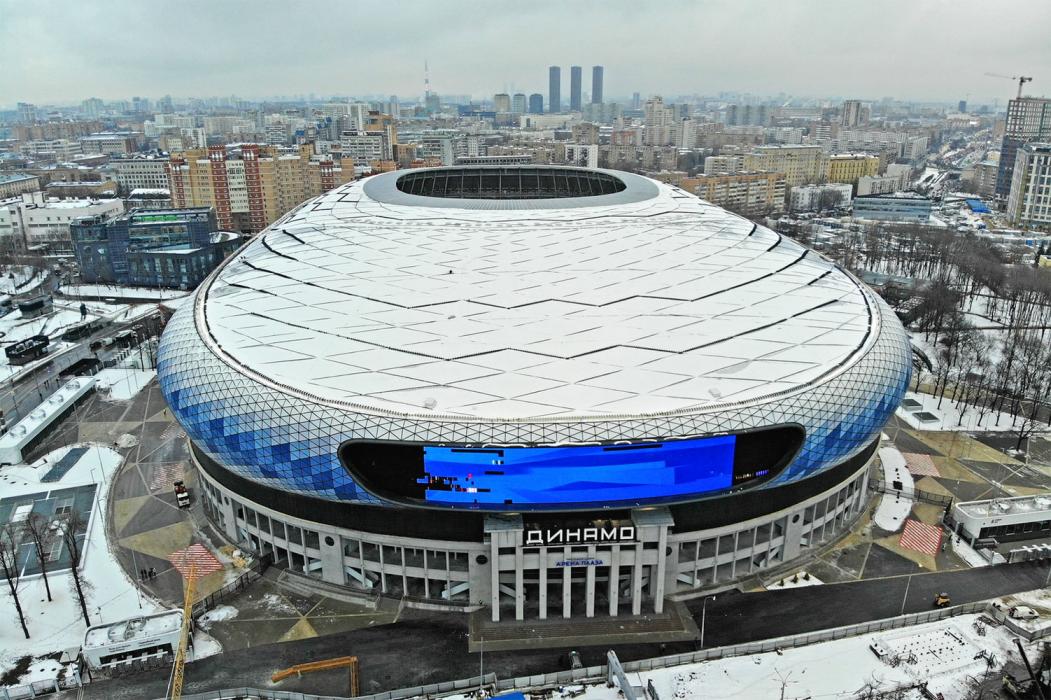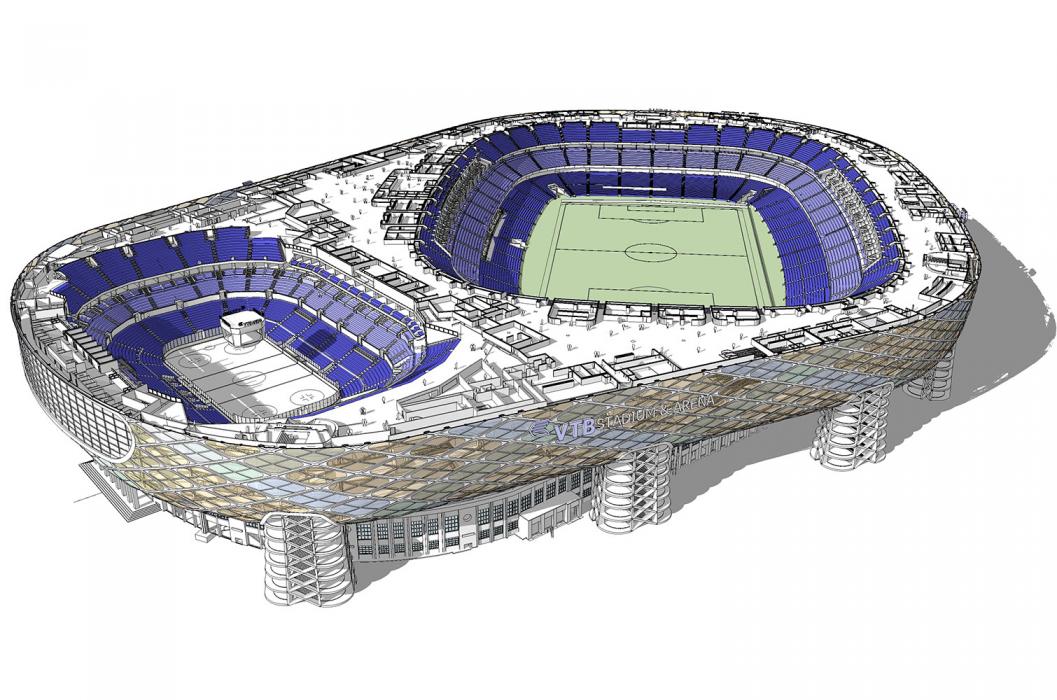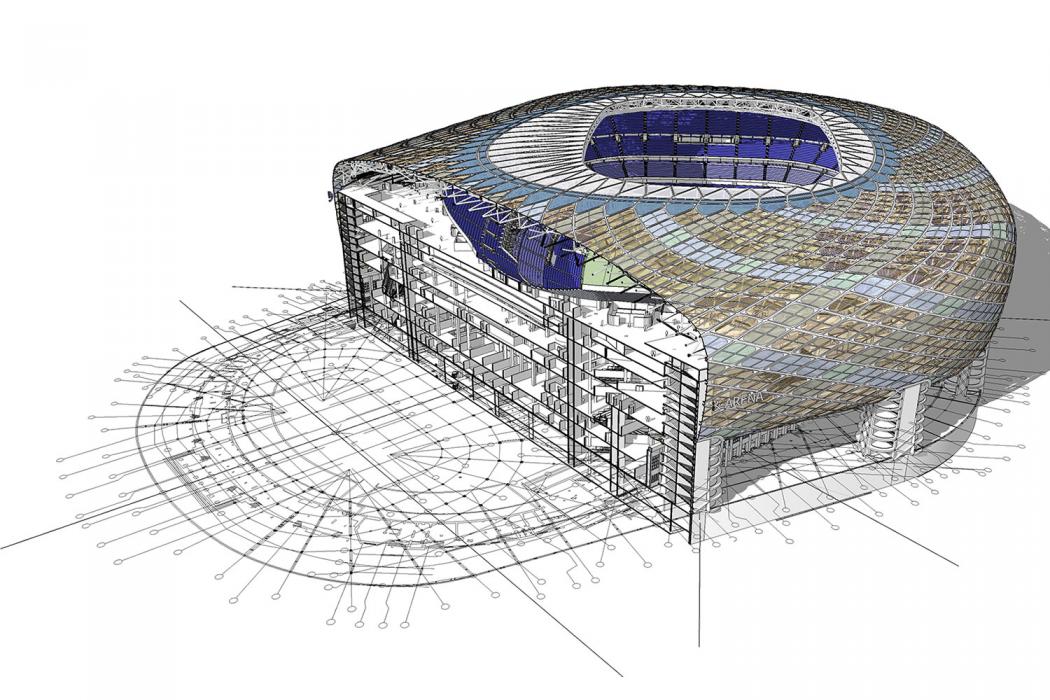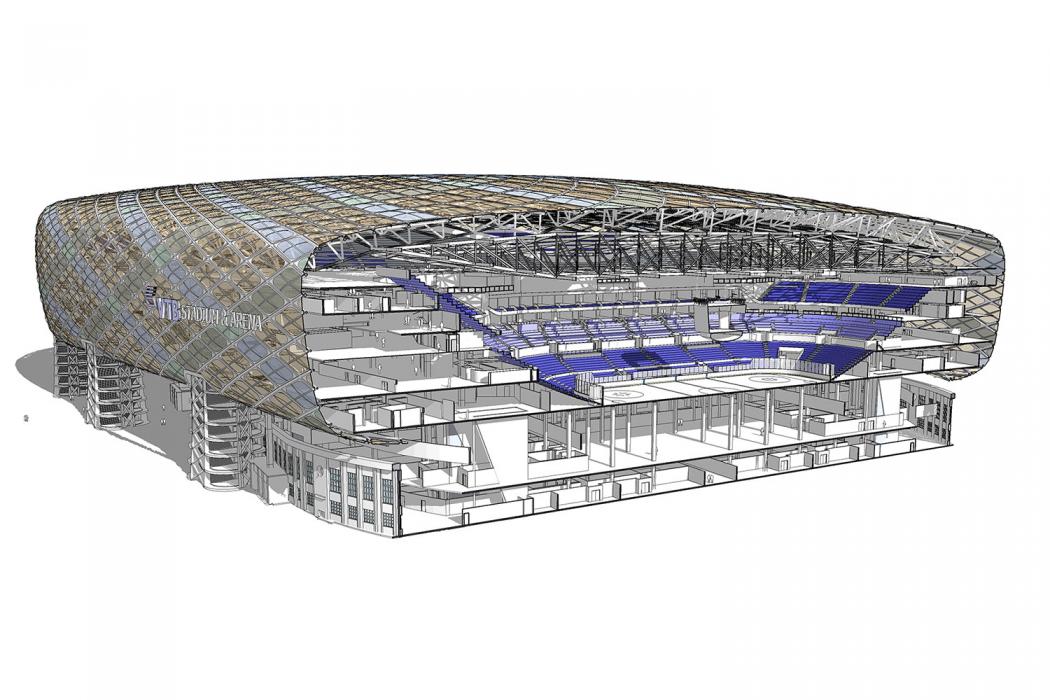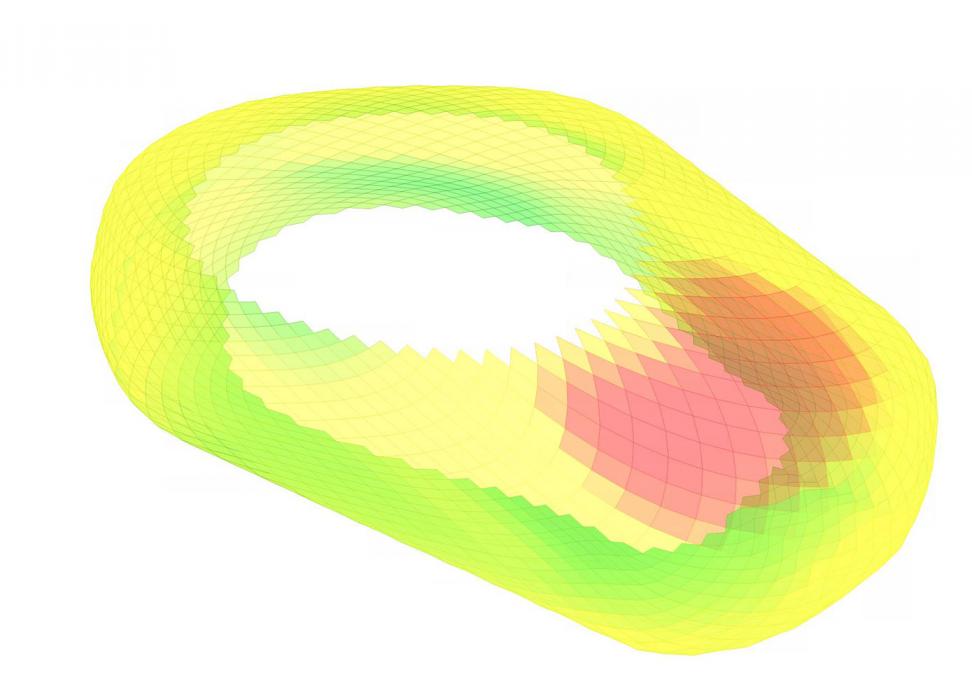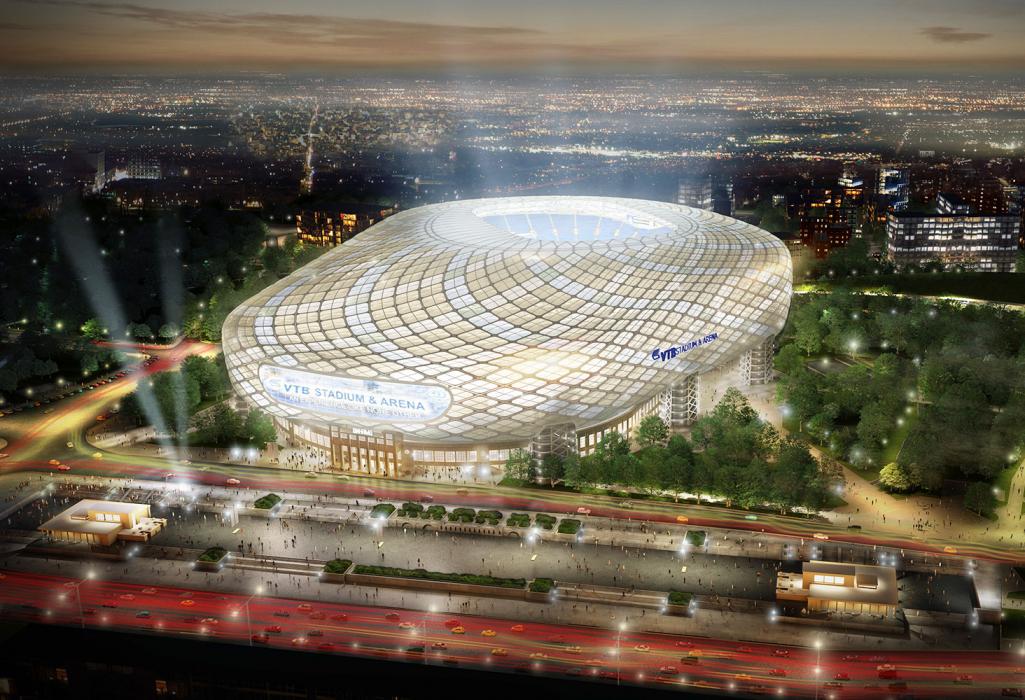VTB Arena Park
How do you update a 1928 stadium to meet modern requirements? In the case of the VTB Arena, you repurpose the old bowl and build a new stadium around it.
Turning One Arena into Two
How do you update a 1928 stadium to meet modern requirements? In the case of the VTB Arena, you repurpose the old bowl and build a new stadium around it.
We worked with Manica Architecture to provided structural engineering, through schematic design, and façade engineering services for the initial design of a reconstruction of a multipurpose facility—for football, basketball, hockey and concerts. Combined seating of the indoor and outdoor arenas, which opened in 2018, is 45,000.
Highlights
- Maintaining the aesthetic goals of the new structure and the historic exterior entryway of the old stadium required several types of structural materials and system configurations.
- The enclosed roof over the arena, the stadium roof with an oculus, and the building façade are contained within one structural system, each with vastly different support conditions and spans.
- The roof framing consists of diagrid trusses built of round hollow structural steel members supporting the building skin elements.
- Polycarbonate, a rigid, cellular material, was selected for the building skin based on the owner’s aesthetic preferences.
- We performed an in-depth analysis of the material—balancing properties such as maximum unsupported spans for façade and roof applications, maximum fabrication width and appearance—to determine efficiency of various panel sizes, shapes and connection angles. We developed a rationalized panelization scheme for the 25,000 panels to achieve the design’s curvature.


